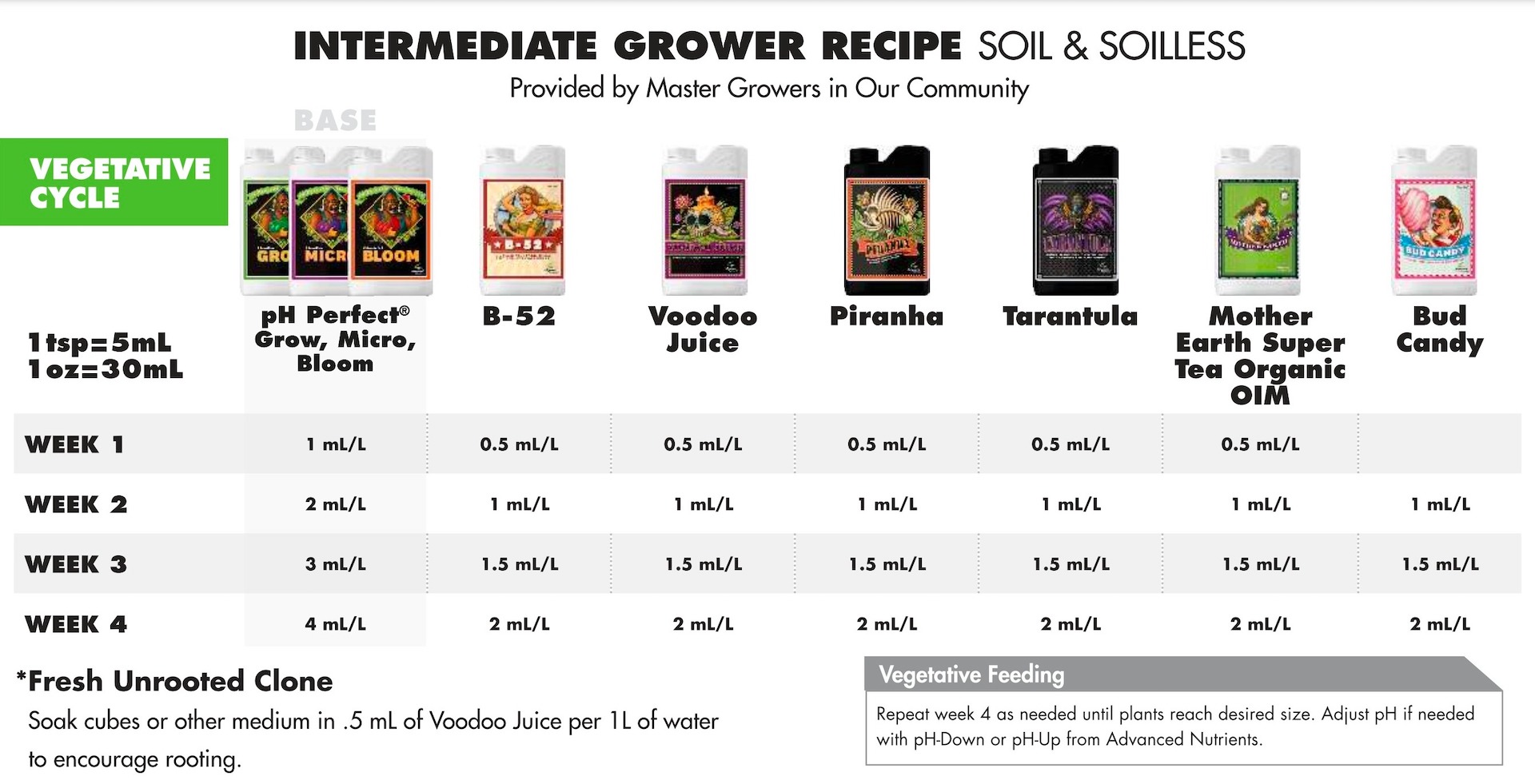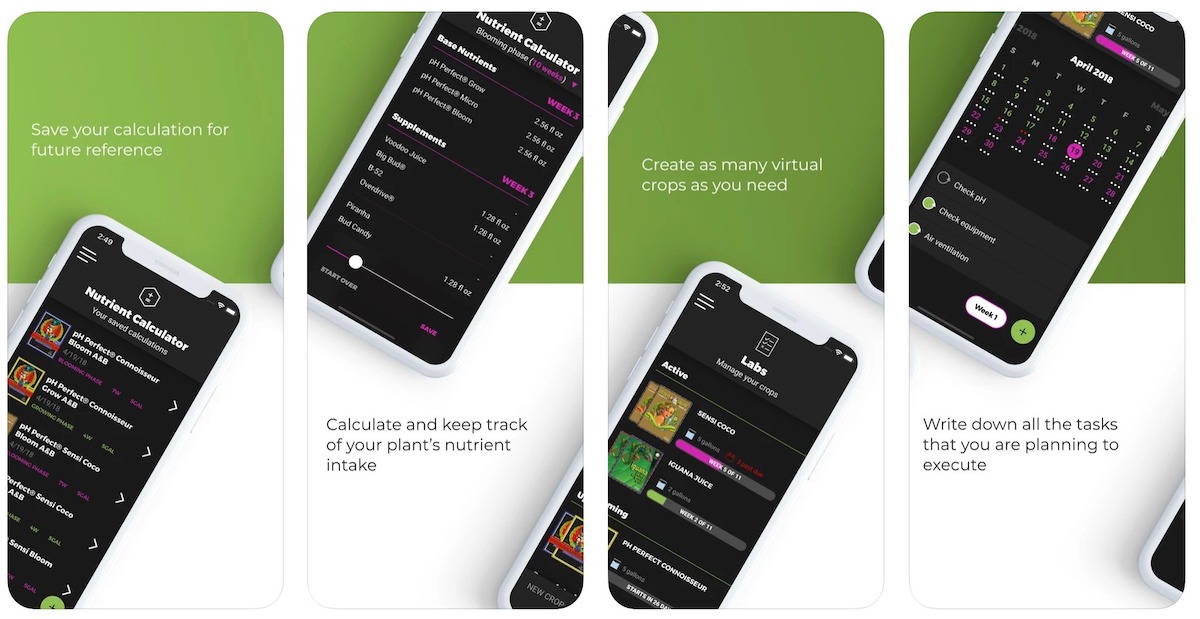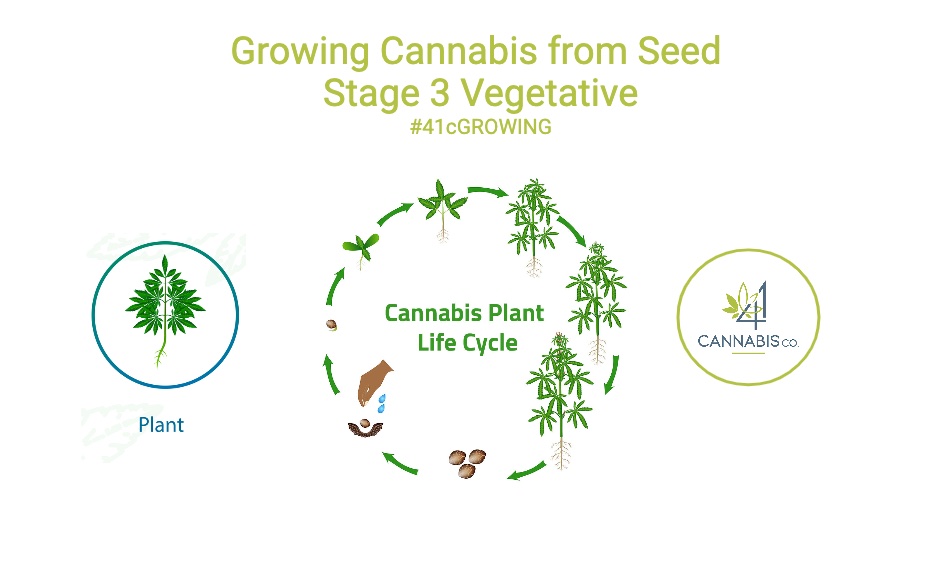
- Growing Cannabis
-
by Kathy Rasmussens
Vegetative Stage
Vegetative stage length: 3-16 weeks
Cannabid light cycle: indoor—16 hours a day; outdoor—at least 6 hours of direct sunlight (“full sun”), plus several hours indirect sunlight.
The vegetative stage of cannabis is when your plant’s growth truly flourishes. At this point, you’ve transplanted your plant into a larger pot and the roots and foliage are developing rapidly. This is also the time to begin topping or training your plants.
Watering: When it’s young, your plant will need water close to the stalk, but as it grows the roots will also grow outward, so start watering further away from the stalk in the soil so roots can stretch out and absorb water more efficiently.
Male or Female? If you need to determine the sex of your plants, they will start showing sex organs a few weeks into the vegetative stage. It’s imperative to separate males so they don’t pollinate the females.
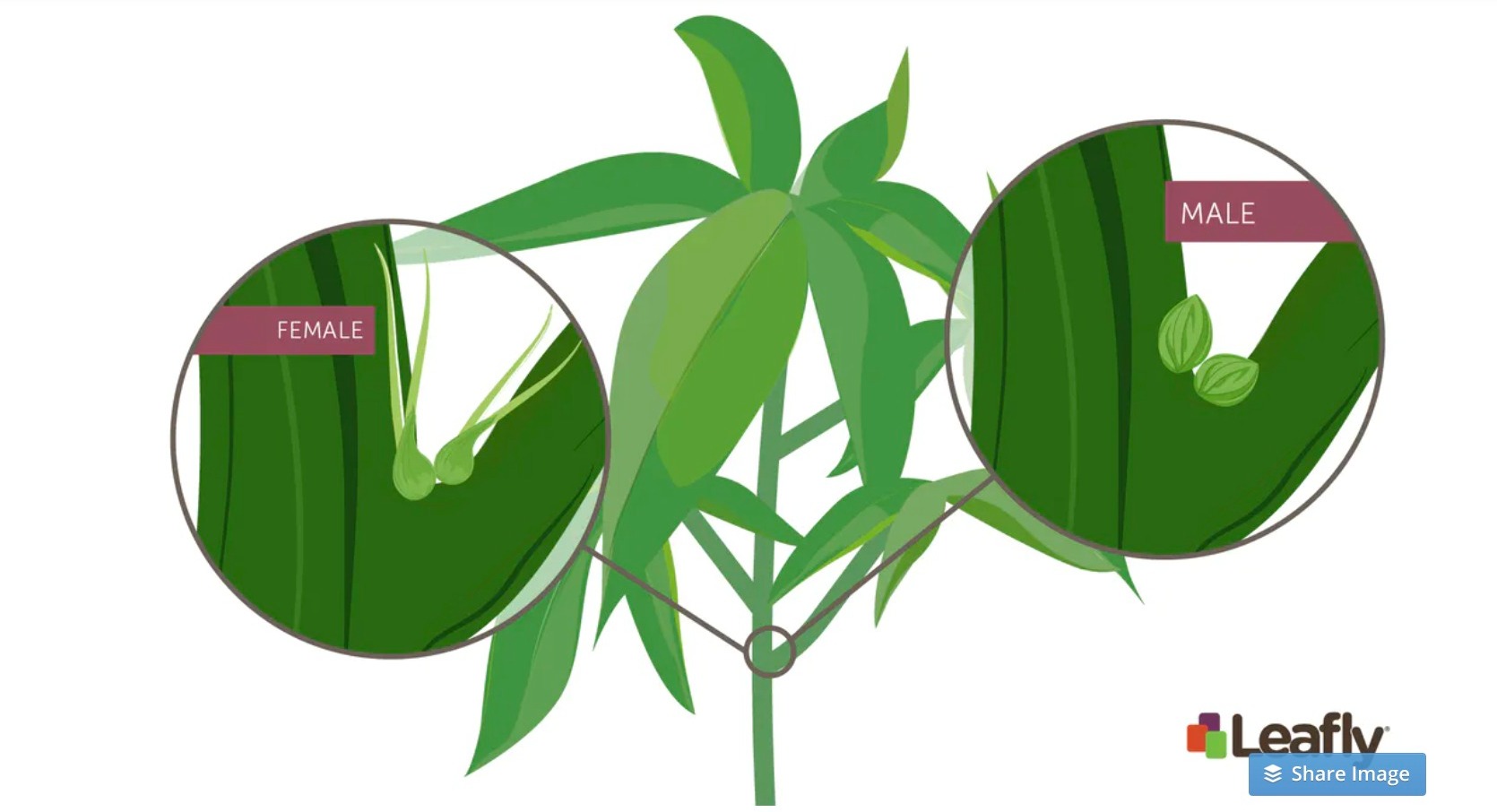
Female cannabis pre-flowers grow as tiny bracts with hair-like stigma peeking out. Male plants produce small, round balls at the nodes. (Amy Phung/Leafly). Link to article: How to top and prune marijuana plants
Grow Location: It’s important to provide the plant space in order to maximize size. One area where plants definitely need lots of space is for their roots.
When To Transplant Your Plants: When you start your plants in a small container they’ll grow faster than if you put them in their final, big container. The smaller pot will make it easier to achieve and maintain optimum levels of air and water for your newborn plants.
You will have to transplant them to bigger containers at the right time as they’re growing to make sure their roots are able to continue expanding. You don’t want the roots to stop branching out, because they can actually form a “wall” around the container if it’s too small.
It’s time to transplant your plants into a 1-3 gallon pot when the leaves of the plant reach the edges of your starting pot. Then, you’ll want to transplant them again when the plants double in height. If they again double in size, you’ll want to transplant them to their final container and simply nurture them until it’s time to flower all the way to harvest time.
Tips to Make Your Plants Grow Faster: The faster your plants grow, the more time they have to become huge before harvest.
- Prune Leaves – If you see dying leaves (easy to spot because of their yellow colour), then you want to cut those off because they’re just eating up energy and resources that could be directed into the rest of your plant–helping it grow faster.
- Give Your Plants More Light – If you’re growing indoors, then as long as you give your plants more than 14 hours of light each day, they’ll stay in the vegetative stage. But you can actually give them 24 hours of light each day and it’s like “forcing” more growth. (Keep an eye on your plants though, if they seem to develop problems you might want to back down to 18 hours of light to recover).
- Use The Best Nutrients – This is one area you don’t want to skimp! It’s important to use nutrients specifically designed for the growth/vegetative stage of your plants.
- Prune The Useless Bottom Shoots – In addition to pruning sick leaves from your plants, you should look for small, useless shoots between the branches and the trunk at the bottom of your plant. If you remove these, then more energy will be available for the colas and leaves at the top of the plant to direct towards growing bigger and preparing for a great harvest.
Topping or Training your Cannabis Plant
Topping is essential to keep your cannabis plants healthy and to get quality yields. “Topping” your plant is a way of damaging it while it’s still young to make it grow the way you want. It will allow your plant to grow flatter and “bushier”. When you “top” a plant, you’re removing the top of the plant’s main stem. This forces the plant to split growth into two main stems.
If left to grow on its own, a marijuana plant will grow vertically, focusing its energy on one main stalk. The result will be one giant cola at the top with smaller colas on the main stalk. These other colas will be small and of poor quality. The overall size and yield of the plant will be small.
Topping is done during the vegetative stage to help redistribute growth hormones from the main stalk to side branches—by cutting off the main stalk, the plant will redirect its energies to side branches, forcing them to grow out, instead of up. Topping makes a weed plant bushier.
When you do this while the plant is still young, in the vegetative stage, then it will grow multiple colas for you. A cola refers to a cluster of buds that grow tightly together. While smaller colas occur along the budding sites of lower branches, the main cola (sometimes called the apical bud) forms at the very top of the plant. In short, you’ll increase your amount of bud sites, and that will set you up later for a great flowering stage where you’ll get maximum buds.
Topping cannabis works best when a plant is strong and developed and can withstand drastic change.
For the first topping—cutting the main stalk—a good rule of thumb is to cut the plant above the 5th node. This will give you enough side branches on the remaining part of the plant for it to bush out properly.
For subsequent toppings on the same cannabis plant, cut each side branch above the second or third node, to allow the plant to continue to bush out properly. These toppings are more subjective however, and will depend on how much you want the plant to bush out and how big you want the final plant to be.
To top cannabis plants:
- Tools: Pruning scissors or a razor blade. The sharper the better—you want to make one clean cut. The tool should be sterilized with rubbing alcohol to help prevent infections in the plant.
- Decide where to make your cut: Find the 5th node on the main stem, and cut above it.
Topping can be stressful for the plant, so keep an eye on it for a couple days and be sure it gets plenty of water and light. If you’re going to top again, give the plant a couple weeks to recover from the first topping.
Advanced Nutrients pH Perfect Grow, Micro, Bloom
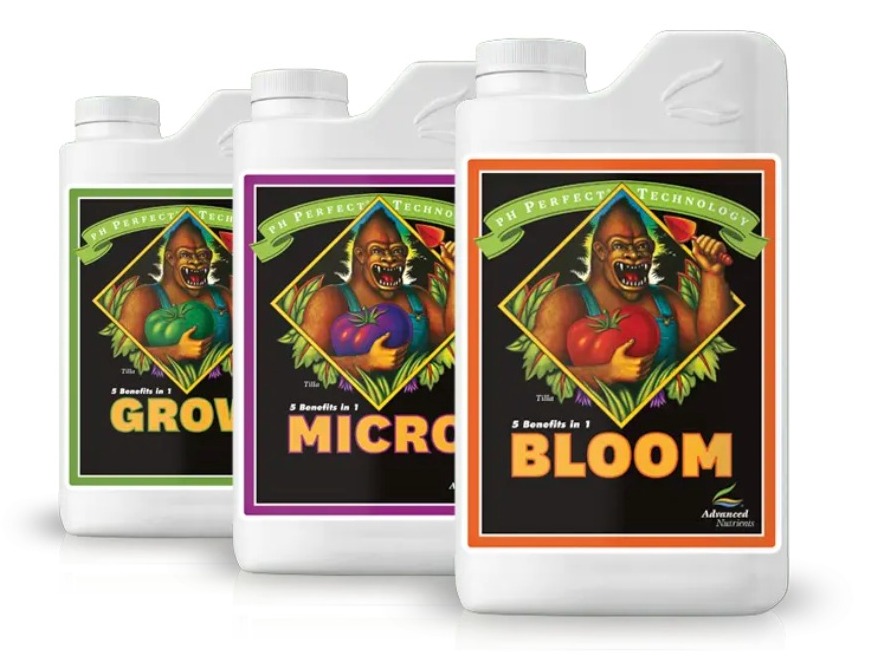 pH Perfect Grow, Micro, Bloom is a 3-part premium base nutrient trio precisely formulated to give your cannabis plant the exact nutrient ratios and concentrations they need. ing.
pH Perfect Grow, Micro, Bloom is a 3-part premium base nutrient trio precisely formulated to give your cannabis plant the exact nutrient ratios and concentrations they need. ing.
pH Perfect® Technology works around the clock to calibrate and adjust the pH for you.
Advanced Nutrients offers tools to make growing easy! You can use the Nutrient Calculator on their website or download their app.
ADVANCED NUTRIENT CALCULATOR
Use the Advanced Nutrients Calculator to create and update your plants’ feeding schedule. The calculator can create literally hundreds of different feeding chart recipes designed to maximize peak performance and yield in your plants.
Link: Advanced Nutrients Calculator
BUDLABS APP
To develop a personalized plant-specific supplement solution, customized to your particular grow, you’ll want to use the
Link: BudLabs App
BudLabs | Click here for the iOS version. | Click here for Android version.
The Budlabs App makes it easy for you to figure out your needed nutrient calculations for growing and save your custom calculations for future use.
-
- Complete product descriptions so you know what every Advanced Nutrients product does.
- Feeding charts for all Advanced Nutrients products, so you always use the correct amounts in your nutrient solutions
- Personal growing profile, so the app is customized according to your needs and growing experience.
- Nutrient Calculator: Choose the phase of your plant and the corresponding nutrient base, depending on the type of strain, the growing method/medium, and the vegetative stage of your crop.
- Select your growing experience. The choices vary from beginner to advanced.
- Provide your reservoir size. You can choose between gallons and liters for easier and more accurate information.
Based on your input, BudLabs will give you the most accurate feeding schedule.
Click here to go to the App Store and download BudLabs.
Click here to go to Google Play and download BudLabs.
Pruning your Cannabis Plant
As a plant grows and bushes out, you’ll get a better sense of its overall shape. This will give you a sense of where the quality buds will grow so you can prune away the unnecessary parts of the plant.
From this point until the beginning of flowering, you can actively prune your plants. Once into the flowering phase, you want to cease pruning, as it can diminish the size and quality of your buds.
To prune cannabis plants:
Grab a pair of pruning shears for quick work on small branches and leaves. Also have another pair with more strength nearby to cut larger branches.
Keep your clippers/scissors sharp and make clean snips—this will keep the plant healthy and prevent infection and damage. Quality buds grow where the plant receives a lot of sunlight and airflow, particularly at the top of the plant.
- Remove large branches first. This will allow you to clear out space before you begin the detailed work. Start with branches on the bottom of the plant. These won’t receive enough sunlight and will never become fully developed buds.
- Cut off branches that will get shaded out. This can include branches in the middle of the plant or others that won’t get light, depending on your setup.
- Prune any small or dying branches or leaves.
In the days following a pruning, your plants should go through a burst of growth—the open space will allow extra light to get to the plant.
